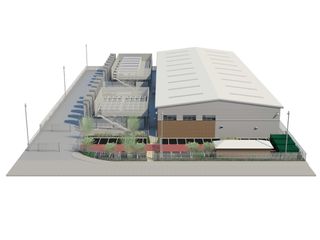South London gains datacentre boost
New facility in Croydon will offer 8,400 sq m of space 10 miles from the City.

Pulsant, the hosting and datacentre company, has completed the first phase of its new south London facility.The 8,400 sq m site is in Croydon, and represents a three year, 14m investment by the vendor. The company has continued to build out its Croydon site, despite the riots that affected the town last year. However, the company said that the site is equipped with cutting edge physical and virtual security measures.Pulsant said that its site Pulsant South London will support high-density rack environments. The new centre can support higher power loads than most businesses' internal data rooms can accommodate, or indeed most central London datacentres, according to Matt Lovell, Pulsant's CTO.
"Most datacentres in inner London can't support the power loads businesses need for high-density IT applications, such as big data," he said.
"We are now commonly seeing rack power requests between seven and 14kW per rack and envisage this will become commonplace over the next 12 months. We are also starting to see even higher requests, of even 20 to 30kW, and we will have to design future phases of South London to support these higher density requirements." The site will offer 1,680 racks when it reaches full capacity.
According to Pulsant, higher densities, and a power efficiency, measured in PUE, of 1.3, will help businesses offset some of the rising costs of electricity. Economies of scale and hedging against electricity price rises will also control costs. "We can't influence the kilowatt hour charges, which can only go in one direction," said Lovell. "But we are looking to help customers migrate from internal IT to an environment that supports higher densities."
In the last few years, higher energy prices have prompted both datacentre operators and customers to look at alternatives to the UK, especially the Amsterdam area. Lovell, though, said that the cost gap between the UK and Dutch-based datacentres has narrowed over the last year, and added that UK datacentres benefit from their proximity to customers' main sites.
"We've seen with events such as the Olympics that customers need to be able to reach their data, with a 30 minute travel time being the target. Croydon is well connected."
Pulsant expects demand to grow for edge-of-town datacentres, as businesses look to consolidate their IT operations, increase outsourcing, and improve resilience by moving services out of city centre locations.
Get the ITPro. daily newsletter
Receive our latest news, industry updates, featured resources and more. Sign up today to receive our FREE report on AI cyber crime & security - newly updated for 2024.




